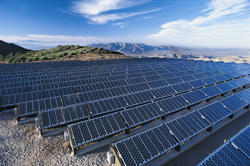From hydrogen to hydrogen with a few steps in between
Hydrogen is a promising alternative fuel source. It is high in energy and its combustion in oxygen produces only water vapour – almost no soot, nitrous oxides or carbon dioxide (CO2). However, although it is the most abundant element in the Universe and one of the Sun's fuel sources, it does not occur naturally in gas form in the Earth's atmosphere. It is almost always bound to other atoms in compounds such as water (H2O) and hydrocarbons. Electrolysis of water (splitting it into H2 and oxygen gas, O2) is one of the cleanest ways to get H2. Using the virtually limitless energy of the Sun for electrolysis makes it even cleaner and more sustainable. Photoelectrochemical cells (PEC) employ a semiconductor electrode that absorbs light and uses its energy to split H2O. However, after decades of research, no electrode materials have been found that combine acceptable efficiency, stability and cost. The EU-funded project 'Nanostructured photoelectrodes for energy conversion' (Nanopec) is using advances in nanotechnology to control the functionalisation of individual components to meet demands. Decreasing the number of criteria that any single material must meet will remove current limitations. During the second reporting period, scientists used novel nano-structuring approaches conceived in the first period to form both conventional materials and newly developed ones. Components included ultrathin oxide under-layers, hematite films, plasmon-enhanced photoelectrodes, graded nanowire arrays, and catalysts and over-layers. Significant enhancements in PEC performance were achieved. Investigators successfully modified over-layers and catalysts to synthesise several novel semiconductor materials with enhanced performance and stability. In order to improve fundamental understanding of PEC processes, scientists analysed material structures, defects and physicochemical behaviour. They also developed an innovative light-trapping technique to maximise light absorption. The second reporting period witnessed the performance evaluation and optimisation of fully assembled PEC devices leading to construction and demonstration of two devices with different configurations. Although cost remains slightly above target, significant progress was obtained in PEC water-splitting and technology is one step closer to exploitation.







